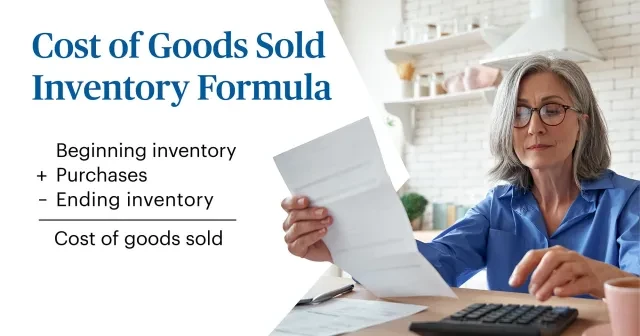- Finanzas
- Artículo
- Lectura de 6 minutos
- Last Updated: 02/17/2022
Taking Year-End Physical Inventory & Why It’s Important

Table of Contents
Inventory is the linchpin of any retail business. As we begin the new year, it's a good time to review your physical inventory and take appropriate action to position your business for the year ahead. Inventory accounting is also a necessary component for an accurate balance sheet and income statement. With an effective year-end inventory management system, your business can enjoy many benefits, including cost savings, improved tracking processes, and future efficiency. This article will take you through what year-end inventory is, the importance of a year-end inventory count, and how to improve your physical inventory process.
What Is Inventory Accounting?
Inventory is a specialized calculation to assign value to the raw materials and finished goods that are used in the course of your business. Inventory accounting is the process of counting the items within your business inventory, assigning value to those items based on a cost system, and then using some accounting calculations to track how inventory is used and managed within your business to create revenue.
Taking Year-End Physical Inventory Can Help Ensure Accuracy
Even if you use inventory management software or other systems to track inventory throughout the year, only an actual count can reveal what you have on hand and make sure it matches what's in your system. For example, it's important to detect "shrinkage," which is a reduction in inventory due to items being damaged, miscounted, or stolen, so that you can address it.
When Should a Physical Count of Inventory Be Taken?
Taking a physical count of inventory should be done periodically on a cycle that makes sense for your business. Companies with short inventory cycles, such as restaurants, may take a physical count monthly or even weekly. Warehouses or manufacturing facilities with longer inventory cycles and large storage facilities may only take physical counts of inventory once or twice per year. Additionally, you may want to perform inventory counts at a point where inventory levels are low to save time and effort.
Be prepared to do a physical inventory on a day you are ordinarily closed or closed solely for this purpose. If the beginning of the year is a slow time for your business, for example, this may be a great time to conduct a business inventory. If the holiday season is a peak time, then perform an inventory estimate (factoring in shrinkage) and wait until after post-holiday sales have been completed to do an actual inventory. The key to executing a successful and accurate physical inventory count is to plan ahead and take appropriate steps before your scheduled counting day. Straightening and organizing inventory shelves ensures that employees can perform product counts quickly and items aren't missed in the count due to being out of place.
Other steps to facilitate a smooth and accurate end-of-year inventory count involve supporting and directing your team. Even in small businesses, there is often too much inventory for all of the counts to be performed by a single person in one day. You will need a team to help complete your physical counts, so set them up for success by planning ahead. Educate your staff on the plan for your counting day and designate specific responsibilities to each team member so that every item gets counted. Create an inventory map of all inventory locations and distribute this map to your team during your planning session. By following the map, team members should be able to start counting quickly on inventory day and easily track which areas have been counted as they progress through the day.
How To Improve Physical Inventory
The goal of any retail business is to have enough inventory on hand to meet customer needs but not too much so that items expire, lose popularity, become obsolete, or needlessly take up expensive warehouse space. Follow these steps for how to do year-end inventory efficiently.
Classify Your Inventory
Use your ABCs to classify items:
- A is for high-demand products you expect to move fast.
- B is for items that are somewhat important in terms of price and frequency of orders.
- C is for goods that are less important to you because they are low-profit items and have an infrequency of orders.
Although the ABC classification system is common in many businesses, there are other ways to classify and organize inventory. Physical markers, such as tags, boxes, or crates can also be used to categorize inventory groups by product type, sales division, price point, or other classification groups. There is no single right or wrong way to classify inventory within a business, but developing a consistent system is important to creating consistency with inventory counts and valuation in the future.
Project Physical Inventory Needs for the Coming Year
After reviewing your current physical count and your ABCs, budget for your inventory needs for the coming year. Of course, your inventory budget may change with customer demand, the economy, the introduction of new items, and other factors.
Dispose of Unwanted Inventory
You don't want to tie up warehouse and shelf space for items that likely won't be profitable to you. Now is the time to hold sales and do markdowns to move items off your shelves. Other ways to dispose of items you can't or don't expect to sell include:
- Selling to a liquidator. While you'll likely realize a small sum, you'll open up your shelves as well as generate cash to help buy new inventory.
- Donating items. You may gain a tax deduction.
- Using items as promotions. If you can't sell items, consider using them to promote the sale of other items.
Tie Your Inventory To Tax Accounting
Reporting inventory on your tax return is essential to determine your income or loss for the year. More specifically, you need to figure your cost of goods sold (COGS). This is the cost of items or materials to make them (i.e., the cost of buying or manufacturing inventory). For tax purposes, COGS is typically determined by using your closing inventory calculation for the previous year as the beginning inventory calculation for the current year.
The simple formula for determining the value of your goods on hand at the end of an accounting period is as follows:

Ending Physical Inventory
Since costs associated with merchandise purchased for resale or materials purchased to create products do not become a part of COGS until the items are sold, valuing beginning and ending inventory accurately is very important. When there are errors in the inventory valuation, COGS will also be inaccurate.
Use an inventory identification method:
- FIFO (first-in, first-out) assumes that the first items bought or produced are the first items sold. The items in inventory at the end of a tax year are matched with the costs of similar items that you most recently purchased or produced.
- LIFO (last in, first out) assumes the opposite; the last items bought or produced are the first items sold. Items included in the closing inventory are considered to be from the opening inventory in the order of acquisition and from those acquired during the year. There's a simplified dollar-value LIFO method for small businesses.
- The specific identification method uses the actual cost of each item sold. This generally is used for businesses that sell large or unique items (e.g., automobiles, antiques) where the item can be matched to actual cost.
Use a valuation method:
- Cost (what was paid for the item, plus shipping fees). This method must be used if you've chosen LIFO.
- Lower cost or market method (lower of the actual cost or current retail value). This method must be used if you're using FIFO.
- Retail. The total retail selling price of goods on hand at the end of the tax year in each department or of each class of goods is reduced to approximate cost by using an average markup expressed as a percentage of the total retail selling price.
Details of inventory identification and valuation methods can be found in IRS Publication 538.
How Do You Calculate Year-End Inventory?
Once your counting is complete and your inventory valuation method is chosen, you can finalize your ending inventory calculations for the period. To value your year-end inventory, you should:
- Take your counts for each item or SKU in your inventory.
- Multiply the count by the appropriate per-piece value for that item or SKU to get an item valuation.
- Add the value of all items or SKUs to get a total ending inventory value.
Your total ending inventory value is then used to calculate your COGS.
Potential Inventory Errors
Taking a physical inventory count can seem like wasted effort if you have a computerized system that tracks purchases and expected inventory values. However, comparing your physical inventory on hand to your expected inventory values can be a great way to calibrate your inventory values and identify potential discrepancies.
Inventory discrepancies can happen for a number of reasons, including theft, spoilage or damage, miscounts, or other product loss. By comparing your inventory records to inventory regularly, you can identify errors in product counts and work to identify and fix the root cause.
Note that if your average annual gross receipts in the three prior years are not more than $25 million, you can opt to be exempt from inventory reporting for tax purposes. Instead of figuring COGS and valuing inventory, you treat items as non-incidental materials and supplies. This means keeping track of items and taking a physical count of inventory, but deducting them when they are purchased or sold.
Inventory accounting doesn't have to be complicated. By tracking stock and managing materials, you can gain insight into your business's purchase decisions.
While attending to your year-end inventory won't guarantee success, it is certainly a key task for many businesses. You can also take advantage of other help available to gain insights into your company's financial health with Paychex Accounting Professionals and our Accountant Year-End Guide.
Tags







